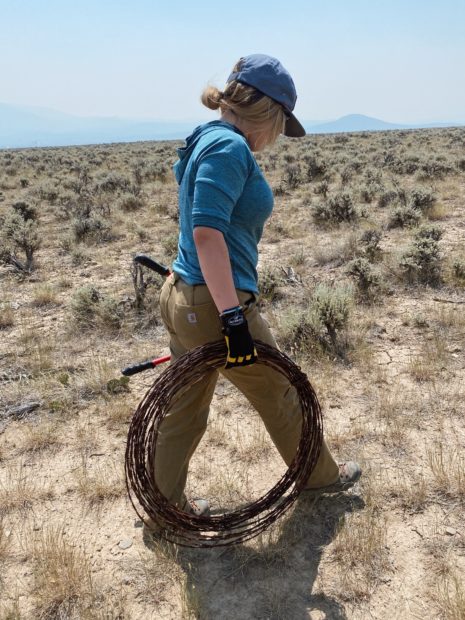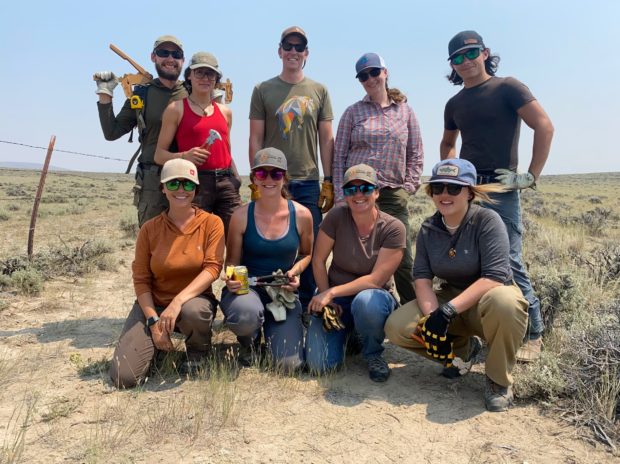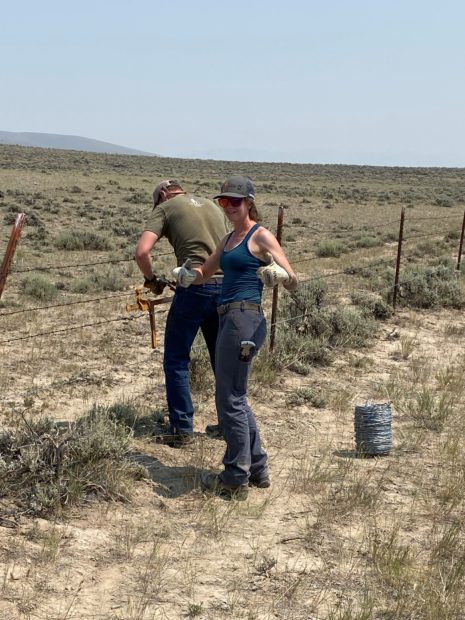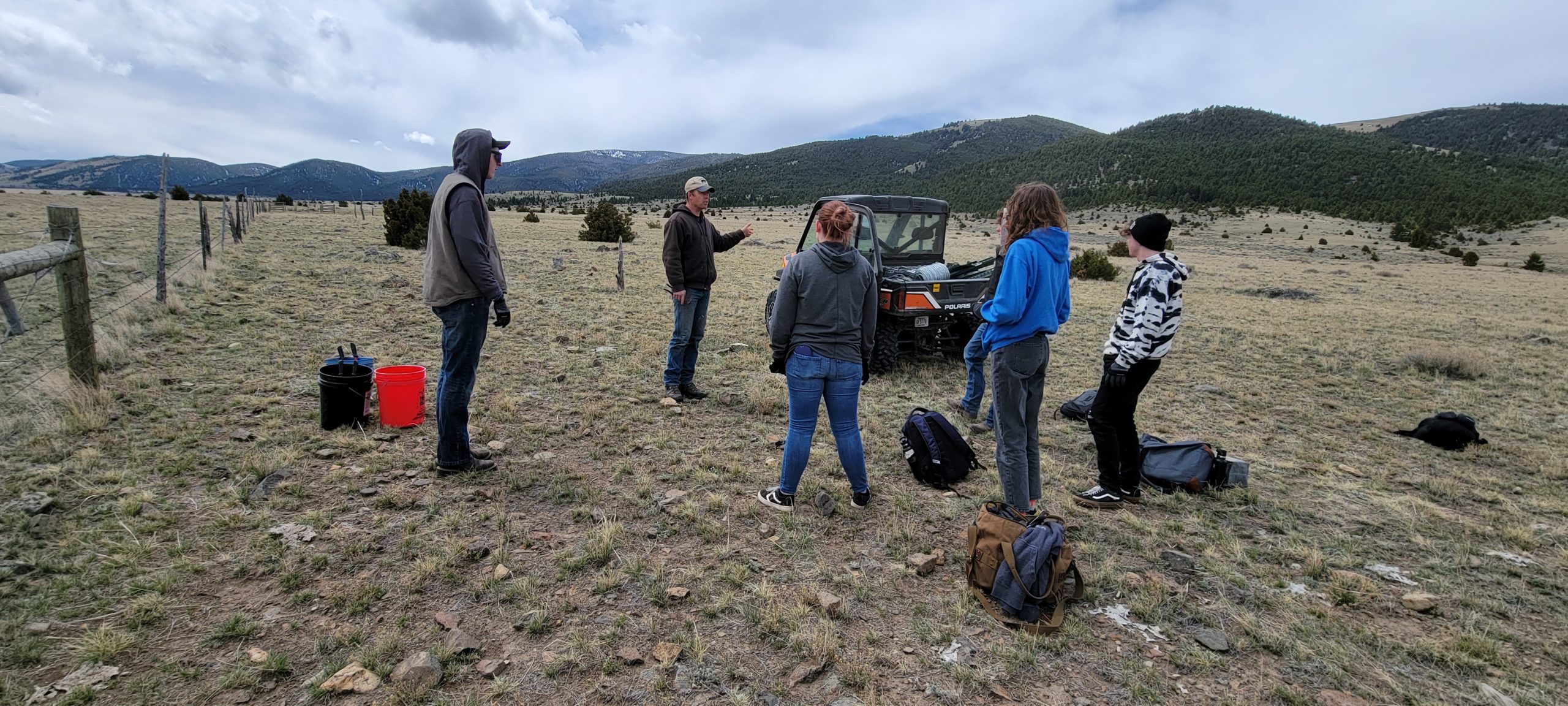We have much more to do and your continued support is needed now more than ever.
Next Generation’s Pronghorn Conservation

A hot July weekend in 2021 set me on one of my greatest undertakings as a conservationist and teacher. That summer, I volunteered through NWF’s Artemis to work on a field project modifying an old fence for pronghorn migration safety. The project in question is a three-year restoration project in Montana’s Horse Prairie region managed by Simon Buzzard of the National Wildlife Federation.
After extensive studies researching the migration patterns of pronghorn, it was determined the fencing here needed to be removed to clear the way for safer wildlife migration. Many other organizations took time to help over previous weekends, and it was finally our turn.



With a team of nine, we pulled the bottom barbed strand off of a ¾ mil stretch and replaced it with smooth, barbless wire. It was hot, it was sweaty, and it was only a small portion of the project, but that is the beauty of volunteer work – if many of us pitch in a small amount of work, it makes a huge impact.
Fast forward to the fall of 2021, when I was approached by Naomi Alhadeff of the National Wildlife Federation to use her teaching unit, WildlifeXing in my Outdoors Literacy class. This unit discusses safe crossings for all wild critters. Here in Montana, we have the second-highest rate of wildlife collisions.
Pronghorn safely navigate wildlife-friendly fencing adapted by Jefferson High School Students.
Crossings such as overpasses, underpasses, and fence modifications to funnel animals to a particular spot can help reduce collisions immensely. The unit asks students to research, write, collect data (through an app!), and analyze various aspects of crossings, as well as indigenous perspectives on wildlife through storytelling.
Outdoors Literacy
The next stop on this journey occurred when my principal forwarded an email to all staff in our school announcing Samsung’s Solve for Tomorrow competition. I didn’t think we had much of a chance, but my students and I proposed the idea of modifying fences in our area for pronghorn migration. Our proposal won the state competition, and so the students had to refine the proposal with a short video explaining the project.
While we didn’t move on to the national competition, winning the state portion allotted us prize money we could spend on following through with the project. We needed to find a willing landowner. Someone who wouldn’t be worried that a group of inexperienced high schoolers would be tearing down and rebuilding a fence on their property. Thankfully, our local Game Warden, Bill Dawson, was willing and up to the challenge of helping us out.
We set up game cameras two weeks in advance to make sure there were pronghorn in the area, and what we saw was at least two herds and several individuals using a small crossing regularly. We arranged two half-days to tear down the whole ⅛ mile fence, portions of which were possibly 100 years old, and put up a new fence.
Students rolled old barbed wire, stacked old posts, pounded in new posts, and stretched the smooth bottom wire in about three hours. When stringing wire on wildlife-friendly fences, the bottom wire height suggestion is 16-18” off the ground. Because this was an interior fence—and escaping calves wouldn’t be on the highway—the Dawson family had the students place the bottom wire at 17-18” the whole way.

A couple of days later, we went out for another half day and finished putting on the top three—barbed—wires, spaced for easier deer and elk migration: top at 40”, next one 12” down from the top, and the third one spaced evenly between the second and bottom wire.
Whereas elk and deer will hop a fence every time, pronghorn prefer to go under. When the bottom strand is barbed, it catches on their backs and can cause extreme injury to the animal. Specific spacing of the top three barbed wires allows elk and deer to jump fences without getting their legs caught and twisted. My students were lucky and able to learn these issues firsthand, and because we worked with a game warden, he passed on a wealth of migratory knowledge to the group.
I never could have foreseen a simple volunteer project bringing me to lead my own with high school students, but I am so grateful it did. The class I created, Outdoors Literacy, encompasses conservation, legislative policy, ecology, mental and physical wellness, and now, volunteering and action. I can’t imagine a better way to get the next generation involved in their own future.





















